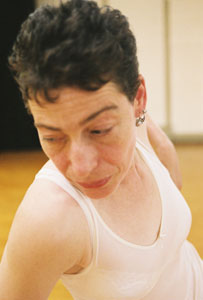Mark Messer
Professor J. Neiman
SCP 201
2007, 2008, 2009 Mark Messer
“Do you want to move or do you want to stand still?”
In the early 1970s, Susan Klein was poised to begin a career as a performing modern dancer. However, a recurring knee injury was severe enough to preclude this move. She engaged in finding a path to recovery and healing. She discovered a different way of functioning that yielded different results. She discovered how to use the body in accord with nature. This yielded healthy function and the possibility of recovery rather continued injury.
Recently, while riding the subway in New York, I met Julio, an orthopedic surgeon from Mexico who had moved to the United States to further his career. I told him of my interest in employing what I have learned from study of Klein/Mahler Technique in the practice of physical therapy. I am completing prerequisites for a physical therapy program which I plan to attend in the coming years. Klein/Mahler Technique advocates dynamic alignment, prominently exemplified by putting the pelvis on top of the legs; dynamic alignment responds to the body’s continual change of shape with ongoing adjustments that keep directing forces in the body to the support of the skeletal system. Julio commented that the old school was more grounded in these fundamental principles of support through the skeleton. As we talked further, he remarked that “the hip cries at the knee.”

